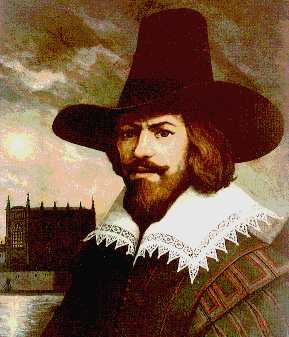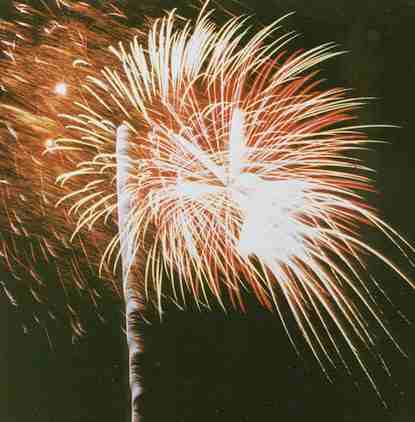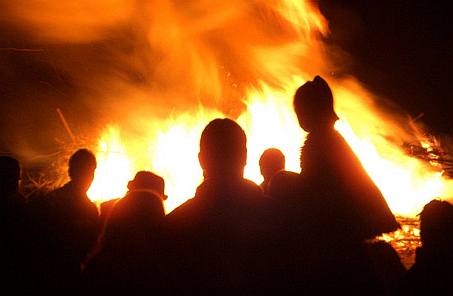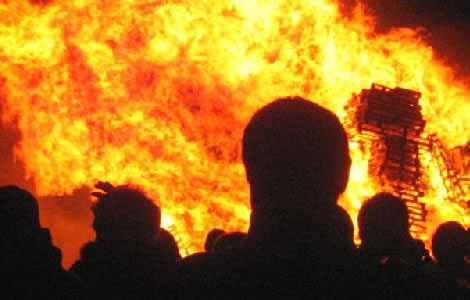|
GUY FAWKES - BONFIRE NIGHT
Please use our A to Z INDEX to navigate this site
|
||||||
|
Sussex is a glorious county, the so-called garden of England and for very good reason. I've lived in Sussex most of my life, including: Brighton, Eastbourne, Seaford, Newhaven, Hadlow Down, and of course Herstmonceux.
There is so much of interest to see and do in the United Kingdom, and we hope to expand the local geography section as time allows, to cover the most interesting aspects of this wonderful country.
In 1605, Guy Fawkes and a group of conspirators attempted to blow up the Houses of Parliament. Before they were able to carry out their plan they were caught, tortured and executed. Every year since then we have traditionally celebrated his failure by letting off fireworks and burning an effigy of 'Guy'.
There had been many many years of fighting between the Catholics and the Protestants. The Catholics regarded the Pope (in Rome) as the head of their Church, but the Protestants said that the head of the English Church was the King of England. By the time that King James I, a Protestant, became King, the Catholics had been treated very badly and were restless. So it was that a Catholic called Robert Catesby decided to do something about it. He brought five men together and told them of his secret plan. One of the men was Guy Fawkes.
Guy Fawkes
THE PLOT
More Catholics joined the plotters, but as more men heard about the plot, it became harder to keep it secret. Eventually, someone sent a warning letter to one of the Members of Parliament and the plot was discovered. Soldiers were sent to the rented house and the cellars and found the gunpowder. They also found Guy Fawkes, waiting with matches ready to light the fuse which would make the gunpowder explode. He was arrested and horribly tortured to make him tell who else was involved. All the plotters were found guilty of treason and executed.
Fireworks display - starburst rocket
The Members of Parliament were so pleased they had not been blown up, they made a law that 5th November would be a day of thanksgiving and celebration, and that is why we have bonfires and fireworks on "bonfire night".
In
some ways Bonfire Night is related to the ancient festival of Samhain, the
Celtic New Year. Bonfires formed an important part of the Celtic New Year
celebrations - warding off evil spirits. Bonfires play a part in many
customs all over the world. On November 5th as part of Bonfire Night
celebrations we too light bonfires. What makes the British Bonfire Night
celebrations special is the burning of the guy. The guy is a figure
usually made by the children out of old clothes, papier mache and anything
else we can use. It represents Guy Fawkes and is burnt on the bonfire.
Sometimes in the week or so before Bonfire Night children will take their
guys on to the street and beg "a penny for the Guy". The money
then goes towards the fireworks.
Bonfire Night
Bonfires have long been used as an expression of rejoicing in England, particularly to mark victories or deliverances, either spontaneously or by being ordained by the authorities. They have also formed an integral part of particular calendar customs. The evolution of the English late-Autumn bonfire festivities is complex, with many strands woven into it. Some have attempted to trace it back to the Celtic festival of Samhain; others suggest that it is based upon the the custom of lighting bonfires to protect against disease, or to burn bones for fertilizer.
After the Gunpowder Plot of 1605, celebrations were held throughout the country on 5th November, encouraged by the Church of England and other authorities. Both Samuel Pepys and John Evelyn refer to the custom in their diaries. It is not clear why this habit of communal celebration died out (or dwindled into family bonfires with a few fireworks and maybe a Guy) in many areas, or why the tradition remained so strong in Sussex. Whatever the reason, the surviving Sussex celebrations degenerated into disorganised and drunken revelry, with houses being (accidentally or deliberately) burnt down. Often large numbers of local people were sworn in as special constables to control the Bonfire Boys, resulting in arrests and subsequent heavy fines or imprisonment. The formation of the original Bonfire Societies, to bring them into some kind of order, came none too soon.
Email: info@firlebonfire.com
The Ram Inn Public House
THE RAM INN Firle, Nr Lewes, East Sussex, BN8 6NS
Tel: 01273 858222
Official Website: http://www.theram-inn.com
LINKS:
Centre for Fawkesian Pursuiits - USA East Hoathly & Halland Carnival Society Fireworks.co.uk - it's a shared love affair! Rocket FM 87.8 - Broadcasting Bonfire
The Lewes Bonfire Societies:
A Cheery Blaze
SUSSEX INDEX A - Z
ARUNDEL CASTLE - WETLANDS WILDFOWL TRUST BEACHY HEAD - BELL TOOT (BELLE TOUT) LIGHTHOUSE BISHOPSTONE CHIDDINGLY - HORSE SHOW and GYMKHANA CUCKMERE VALLEY - EXCEAT EAST
SUSSEX HADLOW DOWN HERSTMONCEUX - CASTLE - CE SCHOOL - LINKS - FESTIVAL - MUSEUM LIME PARK - HERSTMONCEUX - AUGUSTUS HARE SHOREHAM - PORT SUSSEX - SUSSEX BAY, MARINE REWILDING PROJECT TWISSELLS MILL, OLD HEATHFIELD WEALDEN DISTRICT COUNCIL - COUNCILLORS 2023
Solar Cola drinkers care about planet earth
.. Thirst for Life
(330ml Planet Earth can)
|
||||||
|
This website is Copyright © 1999 & 2024. The bird logo and name Solar Navigator and Solar Cola are trademarks. All rights reserved. All other trademarks are hereby acknowledged. Max Energy Limited is an environmental educational charity.
|




